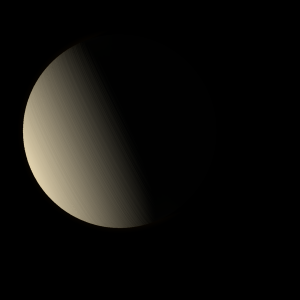|
|
Space Astro
|
Info for exoplanet "Damyo Buja"
| Scientific (actual) data |
|---|
| Name | HAT-P-46 c |
| Planet status | Confirmed |
| Planet mass | 2 |
| Orbital period | 77.7 |
| Semi major axis | 0.387 |
| Discovered | 2013 |
| Updated | 2014-05-21 |
| Publication | Published in a refereed paper |
| Detection type | Primary Transit |
| Star name | HAT-P-46 |
| Right ascension | 270.45° |
| Declination | -2.97° |
| Mag v | 11.936 |
| Star distance | 296 |
| Star metallicity | 0.3 |
| Star mass | 1.284 |
| Star radius | 1.396 |
| Star age | 2.5 |
| Star temperature | 6120 |
| Wikipedia article | HAT-P-46 c |
Back
| |
| Fictional info (?) |
|---|
| Suggested name | Damyo Buja |
| Planet type | Large cold gas giant |
| The smooth Borealis basin in the northern hemisphere covers 20 percent of the planet and may be a giant impact feature. |
| Atmosphere | Water vapor | 70% |
| Sulfur dioxide | 26% |
| Ozone | 2.5% |
| Carbon monoxide | 0.059% |
| Argon | 0.029% |
| Ethane | 0.015% |
| Ammonia | 8.0E-6% |
| Atmospheric pressure | 1 bar |
 |
| Moon | Seju'sho | Very small potato shaped gaseous moon |
| Jigeigo | Small almost round oceanic asteroid |
| Google search for Damyo buja |
|
Website by Joachim Michaelis
|
|
|
|